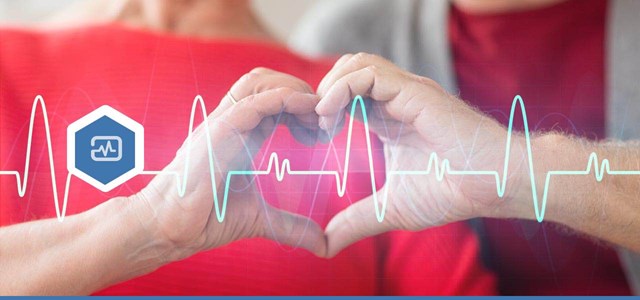
We treasure our hearts: we fill them with love, soothe them when they ache, and keep them powerful with diet and exercise. But sometimes, no matter what, our hearts are affected by illness and disease – and that’s where science can help.
It’s American Heart Month, the perfect time to share with you some of the Weizmann Institute of Science’s remarkable research on the heart. After all, this affects all of us: as the Centers for Disease Control says, heart problems are both common and varied, affect people of all ages, and strike equally across gender and economic borders.
Our researchers apply the Institute’s trademark multidisciplinary approach to their investigations, examining the heart from a range of angles – how it develops, how it heals (or doesn’t), and ways to diagnose and treat diseases and conditions.
Read on for our latest heart-related research, including work that builds upon discoveries we’ve previously shared with you. We may not be able to help after a breakup, but Weizmann researchers are doing all they can to protect your heart.
-
Prof. Sam Safran’s research on irregular heartbeats uses methods from statistical physics, nanoscale science, materials and interfaces, and biological matter research. Applying these tools, his lab, collaborating with the University of Pennsylvania, has provided an extremely detailed look at the mechanisms behind heart muscle cell contractions; when these go awry, irregular heartbeats result.
The model Prof. Safran developed may help explain how certain elements become aligned in heart muscle cells during embryonic development, and how their arrangement correlates with muscle function in the adult heart. The study may help define the limitations of existing therapies for abnormal heartbeat and, in the future, suggest ways of designing new and better therapies.
-
Echocardiograms, or EKGs – ultrasound tests that measure the fraction of blood ejected during a heartbeat – have helped save countless lives, and are considered the most reliable measure of heart function. The problem: interpreting their data is difficult, and training of personnel often continues for years.
On-Sight, a new technology based on the artificial intelligence research of Prof. Yaron Lipman and developed with the NYU School of Medicine, offers an automated approach. It won first place in an industry competition after showing that its ability to interpret EKG images rivaled that of human technicians in accuracy.
Prof. Lipman and the team believe that On-Sight has the potential to improve patient care, and could allow EKGs to be used in places like nursing homes and sports clinics, where it may be able to diagnose heart conditions early. It could also allow the wider use of EKGs in developing countries, saving still more lives.
-
In another example of improving diagnosis for heart conditions, Dr. Ehud Dafni – who says, “In my previous life, I was a professor of nuclear physics at the Weizmann Institute – is CEO and co-founder of Arineta, a company that recently received approval from the U.S. FDA for a new cardiac-mapping CT device. As Globes reports, “Today, when a person comes to a cardiology clinic or hospital complaining of chest pain, he is not usually diagnosed by CT” because of high cost, inaccuracy, and radiation. Arineta’s novel CT system, which maps both the heart and its blood vessels, does not have these issues. Furthermore, it can diagnose not only heart attacks (in real time, no less), but heart attack risk.
Besides its sophisticated, safer technology, the technique’s other benefits include reducing the need for catheterizations, the ability to put the CT machine conveniently in doctor’s offices, and a lower price than other CT machines. Arineta has contracted with GE Healthcare to distribute and market the device.
-
And last but not least, heart-research expert Prof. Eldad Tzahor continues to advance and expand his work. He previously made a headline-inspiring breakthrough when he regenerated heart cells in mice. But did you know that his lab also created a method for making videos of blood vessels being formed? The results are helping answer longstanding questions on the origin of the heart and blood vessels; greater understanding of how the heart develops can lead to improved treatments for disorders.
And in very important recent work, he found a molecule in newborn hearts that appears to control the heart renewal process. Mammalian hearts are actually able to regenerate themselves and repair damage – but only for a brief window around the time of birth – after that, they cannot renew. This lack of regenerative ability is a big part of why heart disease is so often fatal. However, the molecule – Agrin – when injected into adult mouse hearts injured by heart attacks seems to “unlock” that renewal process and enable heart muscle repair. In other words, Agrin turns back the heart-repair clock. These findings are already pointing to new directions for research on restoring the function of damaged hearts.
You can help these and other remarkable, devoted Weizmann scientists continue their research on this most beloved organ. From our heart to yours, please support this lifesaving science.
